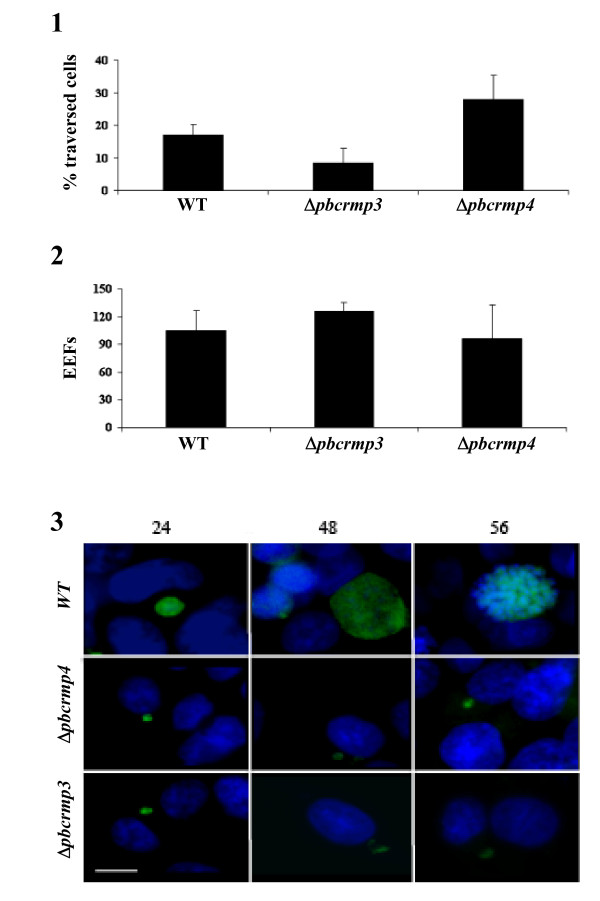Figure 3.
Δpcrmp3 and Δpcrmp4 sporozoites migrate through and infect HepG2 cells. 1) HepG2 cells were incubated with WT salivary gland sporozoites or with Δpcrmp3 or Δpcrmp4 oocyst-derived sporozoites in the presence of rhodamine dextran. Migration rates are expressed as the percentage of uninfected traversed (rhodamine dextran +ve) cells ± the standard deviation. 2) HepG2 cells were incubated with WT salivary gland sporozoites or with Δpcrmp3 or Δpcrmp4 oocyst-derived sporozoites and the development of EEFs was quantified at 24 hours. Infected cells are expressed as the mean ± the standard deviation for each coverslip. 3) WT parasites show normal development in EEFs at 24 hours post-infection and develop into trophozites at 48 hours and schizonts at 56 hours. Δpcrmp3 and Δpcrmp4 parasites establish infection at 24 hours but remain small with irregular shapes. Fluorescence pictures of EEF (green) and nuclei (blue). Scale = 5 μm.

